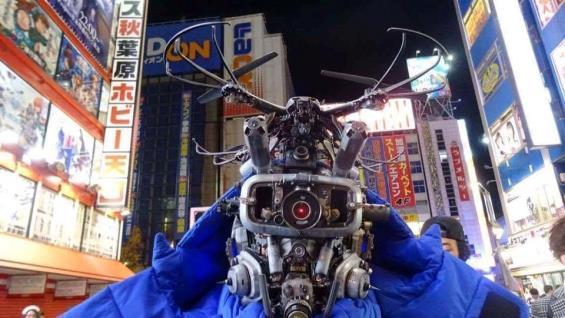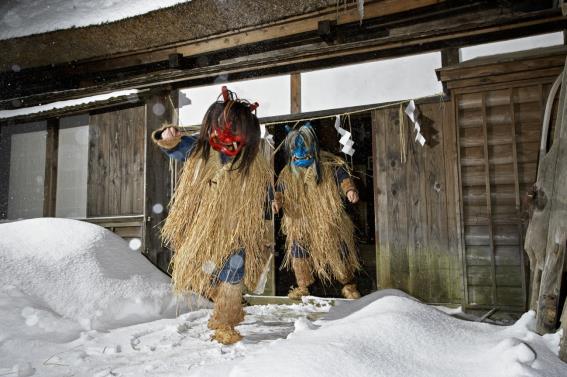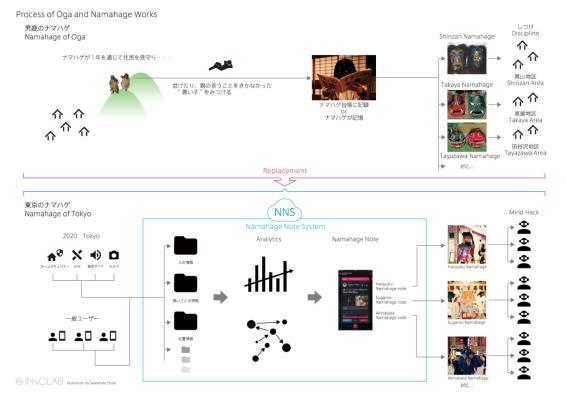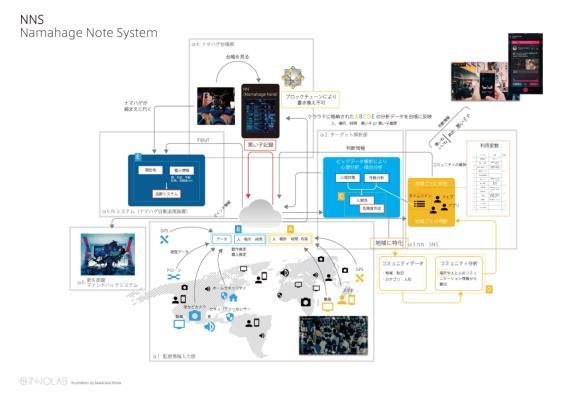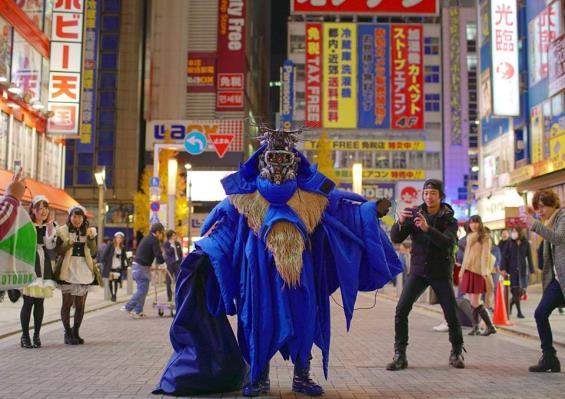Hello, I'm Abe, a Communication Planner at the Open Innovation Lab (InnoLab) of Dentsu Inc. International Information Services (ISID).
In the fall of 2016, Inolab launched the "Japan's 'Matsuri' RE-DESIGN Project." The goal is to use technology to reinterpret the rich spiritual essence found in folk events and festivals across Japan in a modern way.
We also created a cute logo.
Before launching this project, Inolab welcomed artist Etsuko Ichihara as a collaboration partner. Ichihara is a media artist known for projects like the "Digital Shaman Project," where household robots carry traces of the deceased for 49 days of coexistence, and the "Sexual Interface," a device where daikon radishes pant seductively. We barely knew each other, but I happened to find Ms. Ichihara's blog post announcing she'd become freelance. Thinking "now or never," I used every social media platform to court her relentlessly, making sure she couldn't escape. Social pickup, you could say (laugh).
Ms. Etsuko Ichihara in shrine maiden attire
There's one thing I look for in external collaborators I want to work with: someone whose ideas surpass my own understanding. Looking at Ms. Ichihara's past projects, I realized her ideas start off completely out there, beyond my comprehension. The fact that the final output is unpredictable is fascinating in itself. I was certain working together would yield something beyond imagination, so I reached out.
We promptly invited her to Inolab, where Chief Producer Hiroshi Morita and I interviewed her about her current interests. Among several great ideas and some truly wild ones, keywords like "indigenous rituals" and "regional festivals" emerged. We linked these to keywords Inolab had been pursuing, such as "inbound tourism," leading to the launch of this project.
From there, we moved on to selecting the first festival. Books like "Japanese Festivals" and "Japan's Bizarre Festivals" piled up on our desks. While we're technically an SIer, we spent hours discussing festivals in the quiet engineer workspace – it must have been incredibly disruptive. Hearing later that they thought "it sounded fun" made me happy though (laugh).
Since it was for an overseas audience, I recall us discussing how a festival that felt somehow familiar to foreigners might be best. Masked festivals like those represented by Namahage aren't unique to Japan; they exist worldwide. We were also inspired by French photographer Charles Fréger's "YOKAI NO SHIMA."
"No bad kids here!"
And so, we headed to Oga City in Akita Prefecture, home of the Namahage.
We shared our passion for Namahage, found common ground with Oga City Hall officials, and with the cooperation of Oga City and the Oga City Board of Education, the first installment of the "Japanese 'Matsuri' RE-DESIGN Project" officially launched. This was in the early autumn of 2016.
From there, we visited Oga City several times for interviews and filming. While our understanding of Namahage focused heavily on its role in "disciplining children," the most fascinating aspect shared by the people of Oga City was the story of the "Namahage Register."
Namahage appear at each household on New Year's Eve. They bring with them the "Namahage Register" – a document researched beforehand detailing what happened to that family during the year (this seems specific to the Mayama district's Namahage). Using this ledger as a guide, the Namahage converse with the family. If the grandmother is ill, they offer words of comfort; if the son's grades are slipping, they offer stern encouragement. In this way, they played a role in maintaining the local community.
When people become isolated and lonely, they tend to drift toward negative paths. Namahage, in their meddlesome way, prevent people from becoming lonely. We thought that a system like the "Namahage Ledger" is precisely what is needed in cities, where loneliness comes all too easily.
This is the result of thinking too seriously.
And we learned that Namahage actually adapts to its environment. While Oga City alone has over 80 types of Namahage, masks in coastal villages incorporate seaweed, tailored to their specific locale.
The Namahage Registry as a community maintenance system, and Namahage adapting to the land and culture...
I immediately began simulating with Mr. Ichihara what would happen if Oga's Namahage appeared in Tokyo.
Akihabara, Harajuku, Sugamo, Shibuya, Shinjuku... Namahage adapting to each location. And wouldn't the "naughty children" targeted in each district be diverse too...? We agonized over how to output this grand fantasy.
The result of overthinking it? This. Seriously?
So we consulted Mr. Asao Kamo, a science fiction writer living nearby who also worked at NHK. He suggested several unexpected approaches and introduced us to Hiroaki Matsu, a Cannes award-winning visual director.
For the symbolic "Akihabara Namahage" mask, artist and sculptor Hiroto Ikeuchi took charge. Costumes were handled by chloma, a fashion label proposing environments and clothing for modern people. Renowned creators resonated with Namahage and gathered together. The sheer number of people involved made me think it was like a Water Margin gathering.
Filming took place in December, with biting north winds. Oga City is coastal, so we shot while nearly getting blown away by the wind, with the raging Sea of Japan as our backdrop. While filming in Oga was harsh, what I never anticipated was the filming in Tokyo.
Transforming into the Akihabara Namahage was just too exhausting... (For some reason, I'm the one wearing it).
The design is absolutely top-notch, but wearing it is brutal: the Akihabara Namahage.
The Namahage mask is packed with Akihabara-esque elements like drones and VR glasses.
First off, wearing the mask makes breathing nearly impossible, so you're constantly oxygen-deprived. The costume is basically like a down jacket, so it's hot and heavy. It's a crucial role in the Tokyo segment, so I had many scenes. I performed to the best of my ability to avoid causing any trouble for the people of Oga City. Now, please witness my masterful performance.
Namahage appears in Tokyo.
Using platforms like Facebook, we reached an overseas audience totaling 1.6 million views. While we're currently measuring the impact, we believe we've successfully introduced another facet of Japanese culture to international viewers. Please come visit Oga City to experience the real Namahage.
Next, we might just show up at your town's festival.

